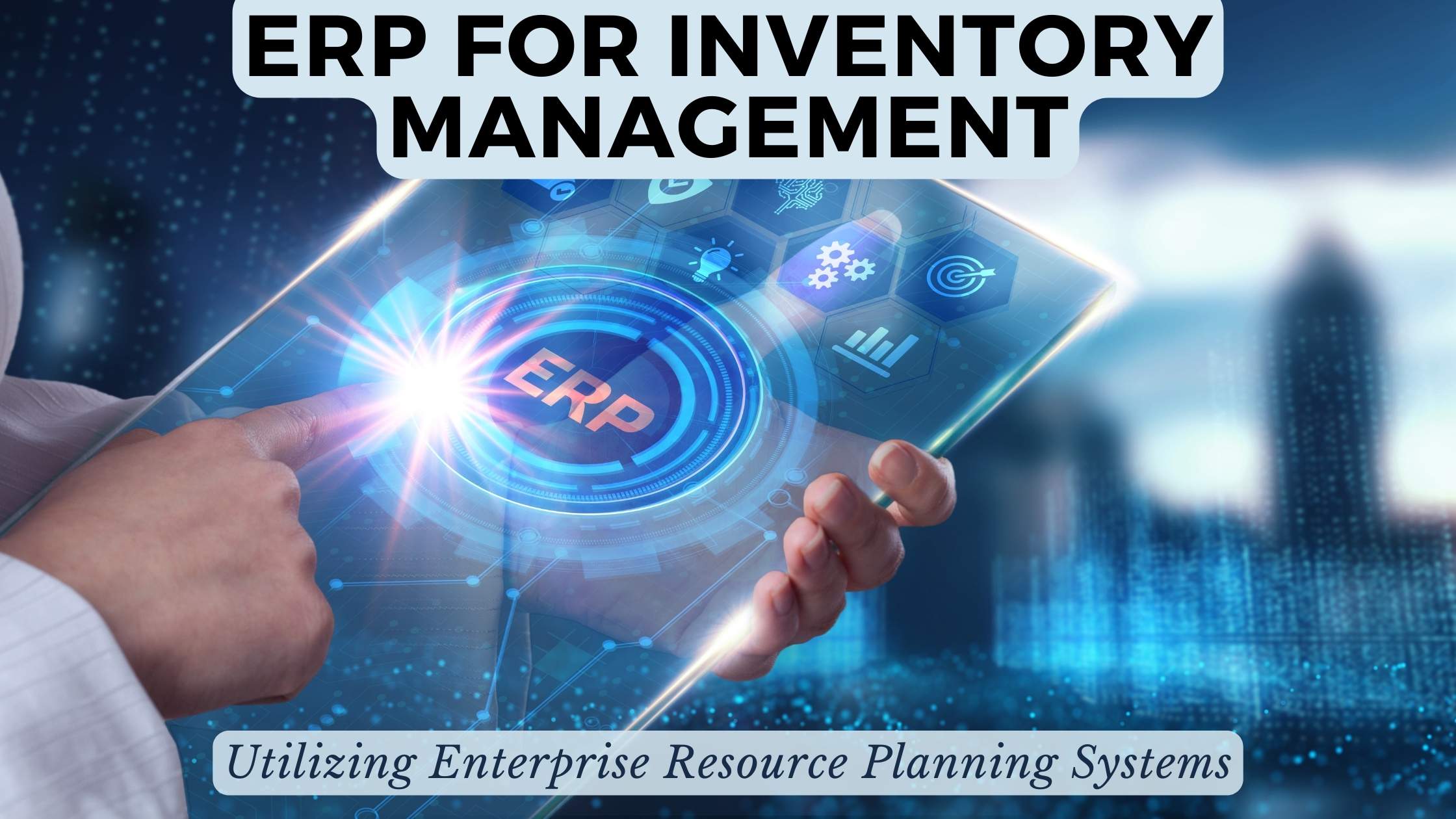ERP for Inventory Management: Utilizing Enterprise Resource Planning Systems
- Expense Management Software Credit Cards Investing Business Solutions


ERP for Inventory Management: Utilizing Enterprise Resource Planning Systems
Enterprise Resource Planning (ERP) systems play a crucial role in streamlining business operations, and one of the key areas where they excel is inventory management. In this comprehensive guide, we’ll explore how ERP systems are utilized for effective inventory management, addressing common questions and providing insights into relevant SaaS products to optimize your inventory processes.
Understanding ERP Systems and Inventory Management
ERP systems are integrated software solutions that enable organizations to manage various aspects of their business, including finance, human resources, supply chain, and inventory. When it comes to inventory management, ERP systems provide comprehensive tools and functionalities to track, monitor, and optimize inventory levels, transactions, and processes across the entire supply chain.
Key Functions of ERP for Inventory Management
- Inventory Tracking and Visibility: ERP systems offer real-time visibility into inventory levels, locations, and movements across multiple warehouses or facilities. This visibility allows businesses to accurately track stock levels, monitor inventory turnover rates, and prevent stockouts or overstock situations.
- Order Management and Fulfillment: ERP systems streamline order processing and fulfillment by automating order entry, invoicing, and shipping processes. Integrated with inventory data, ERP systems ensure that orders are fulfilled promptly and accurately, minimizing order processing errors and improving customer satisfaction.
- Demand Forecasting and Planning: ERP systems leverage historical sales data, market trends, and demand forecasting algorithms to predict future demand for inventory items. By analyzing demand patterns and seasonality, businesses can optimize inventory stocking levels, reduce excess inventory holding costs, and improve inventory turnover ratios.
- Inventory Optimization and Cost Control: ERP systems provide tools for inventory optimization, including reorder point calculation, safety stock management, and ABC analysis. By optimizing inventory levels based on demand variability and lead times, businesses can minimize carrying costs, reduce stock obsolescence, and improve overall inventory performance.
SaaS Products for ERP and Inventory Management
To support your inventory management efforts and maximize the benefits of ERP systems, consider leveraging the following SaaS products:
1. SAP S/4HANA:
SAP S/4HANA is an intelligent ERP suite that offers advanced inventory management capabilities, including real-time inventory tracking, demand-driven replenishment, and predictive analytics. With built-in AI and machine learning capabilities, SAP S/4HANA helps businesses optimize inventory levels, reduce stockouts, and improve supply chain efficiency.
2. Oracle NetSuite:
Oracle NetSuite is a cloud-based ERP solution that provides end-to-end inventory management functionality, from procurement and warehousing to order fulfillment and replenishment. With features such as bin tracking, lot tracking, and serial number management, NetSuite enables businesses to maintain accurate inventory records and improve inventory visibility.
3. Microsoft Dynamics 365 Supply Chain Management:
Microsoft Dynamics 365 Supply Chain Management is a comprehensive ERP solution that offers robust inventory management capabilities, including warehouse management, inventory forecasting, and inventory cost control. Integrated with Microsoft Power BI for analytics, Dynamics 365 Supply Chain Management empowers businesses to make data-driven inventory decisions and optimize supply chain performance.
4. inFlow Inventory:
inFlow Inventory is a user-friendly inventory management software designed for small and medium-sized businesses. With features such as stock tracking, order management, and reporting, inFlow Inventory helps businesses streamline their inventory processes, reduce stockouts, and improve inventory accuracy.
5. Fishbowl Inventory:
Fishbowl Inventory is a robust inventory management solution that integrates seamlessly with QuickBooks and other accounting software. With features such as barcode scanning, serial number tracking, and multi-location inventory management, Fishbowl Inventory enables businesses to optimize their inventory operations and enhance efficiency.
Conclusion
Effective inventory management is essential for businesses to optimize supply chain operations, reduce costs, and enhance customer satisfaction. By leveraging ERP systems and relevant SaaS products tailored for inventory management, organizations can streamline inventory processes, improve inventory visibility, and drive overall business success. With a focus on real-time tracking, demand forecasting, and cost control, businesses can achieve greater efficiency and profitability in managing their inventory operations.
For businesses seeking comprehensive insights into ERP and inventory management solutions, Subscribed.FYI serves as a valuable resource. From industry-leading platforms like SAP S/4HANA and Oracle NetSuite to specialized tools like inFlow Inventory and Fishbowl Inventory, Subscribed.FYI provides detailed information and comparisons to help you make informed decisions about your inventory management technology stack.
Relevant Links:
- SAP S/4HANA
- Oracle NetSuite
- Microsoft Dynamics 365 Supply Chain Management
- inFlow Inventory
- Fishbowl Inventory
- Subscribed.FYI





